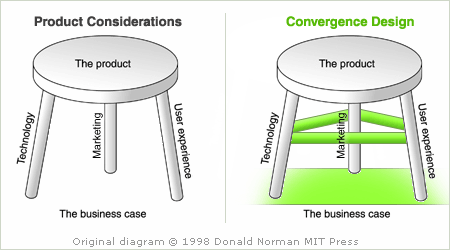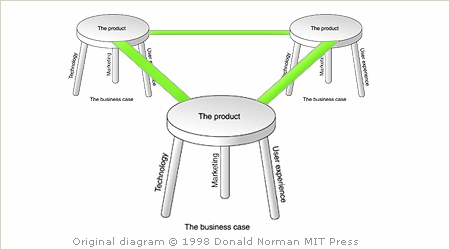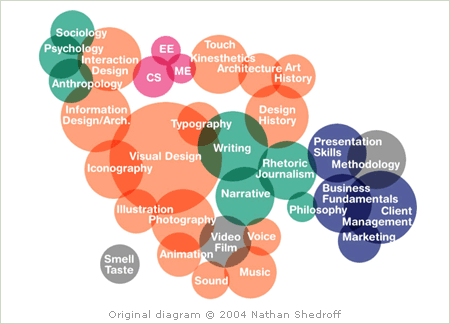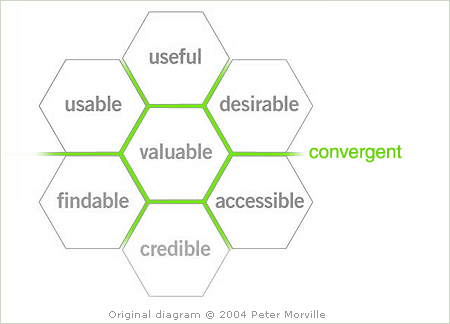Convergence design uses the connections and commonalities between products, areas of specialization, and processes to solve human-centric problems including: how design can streamline development, where digital products should intersect, and when products become usable, useful, AND enjoyable.
A modified version of Don Norman’s product considerations diagram from The Invisible Computer (below) is useful for illustrating some of the higher level overlaps that serve as the convergence design stomping grounds in product development.

The green connections in the stool model are where convergence design happens in products. They represent both constraints AND opportunities.

Another modification of the stool diagram illuminates possible convergence zones between products. These can be a single company’s product offerings or a coordination effort through existing standards or platforms. Convergence zones can often illuminate paths to innovation.

An awareness of the connections between areas of specialization is required for effective convergence design. Nathan Shedroff’s diagram from New Methods for Designing User Experiences (above) highlights this fact: “Experience Design, then is an approach that integrates all of this.”

Assuming you have the right principles for creating product credibility, desirability, or usability -how do you bring them all together effectively? As individual areas of specialization strengthen their best practices and create more succinct and actionable guidelines, design will be about achieving balance. Peter Morville’s User Experience Honeycomb illuminates this fact. The “honey” responsible for “sticking” UE principles together is convergence.